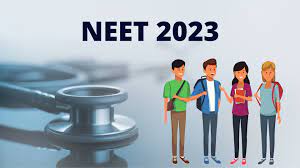For many, the word conjures images of textbooks, lectures, and rote memorization. But what if learning could be engaging, enjoyable, and even fun? Enter gamification, the strategic use of game elements in non-game contexts. By incorporating elements of play into the learning process, gamification has the potential to revolutionize education, making it more effective, engaging, and accessible for all.
The Science Behind the Fun
Gamification’s effectiveness stems from its deep understanding of human psychology. Games tap into our intrinsic desire for challenge, competition, and reward. When we play, our brains release dopamine, a neurotransmitter associated with pleasure and motivation. This positive reinforcement loop not only makes learning more enjoyable but also enhances memory formation and information retention.
The Benefits of Gamified Learning
Gamification offers a multitude of benefits for learners of all ages:
Increased Engagement:
Traditional learning methods can often be passive and monotonous. Gamification injects excitement and interactivity, transforming learning into an engaging journey. Points, badges, leaderboards, and storylines create a sense of accomplishment and motivate learners to progress.
Enhanced Motivation:
Gamification fosters a growth mindset, encouraging learners to see challenges as opportunities for improvement. The ability to “level up” and unlock new content provides a sense of accomplishment, keeping learners motivated to strive for mastery.
Improved Retention:
Gamified learning experiences often involve active problem-solving and application of knowledge. This hands-on approach allows for deeper understanding and information retention compared to passive learning methods.
Personalized Learning:
Gamification allows for a more adaptive learning environment. Learners can progress at their own pace, with the difficulty level dynamically adjusting to their skill level. This caters to different learning styles and ensures a more personalized learning experience.
Developed Skills:
Many games incorporate elements of critical thinking, problem-solving, collaboration, and communication. Gamified learning experiences can foster the development of these essential 21st-century skills in a fun and engaging way.
Positive Learning Environment:
Gamification promotes a more positive and collaborative learning environment. Leaderboards can foster healthy competition, while team-based challenges encourage teamwork and communication.
Examples of Gamification in Action
Gamification can be implemented in a variety of educational settings and subjects. Here are some real-world examples:
Language Learning Apps:
Duolingo, a popular language learning app, uses gamification elements like points, streaks, and leaderboards to make language learning engaging and interactive.
History Simulations:
Games like Civilization allow players to explore historical events and make decisions that impact the course of history. This immersive experience fosters a deeper understanding of historical concepts.
Math Challenges:
Khan Academy incorporates points, badges, and mastery levels to motivate students to learn and practice mathematical concepts.
Science Gamification:
Interactive science simulations allow students to conduct virtual experiments and explore scientific phenomena in a safe and engaging environment.
Designing Effective Gamified Learning Experiences
While gamification holds immense potential, it’s crucial to implement it strategically. Here are some key considerations for educators and instructional designers:
Alignment with Learning Objectives:
The game mechanics and elements should be aligned with the specific learning objectives. Gamification should not overshadow the content itself.
Variety and Challenge:
Effective games offer a variety of challenges that progressively increase in difficulty. This keeps learners engaged and motivated to continue learning.
Clear Feedback:
Gamified learning experiences should provide clear and immediate feedback to learners. This allows them to identify areas for improvement and adjust their learning strategies.
Balance is Key:
While gamification can be a powerful tool, it’s important to maintain a balance. The focus should remain on learning and acquiring knowledge, not simply on winning the game.
Accessibility and Equity:
Gamified learning experiences should be accessible to all learners, regardless of their background or abilities. Consider diverse learning styles and provide multiple pathways to achieve success.
The Future of Learning: Embracing the Power of Play
Gamification is not simply a fad; it represents a fundamental shift in how we approach learning. By harnessing the power of play, we can create learning experiences that are not only effective but also enjoyable and engaging. As technology continues to evolve, we can expect even more innovative and immersive gamified learning experiences that cater to the individual needs of every learner. By embracing the power of play, we can unlock a world of possibilities and empower learners to become lifelong explorers of knowledge.



